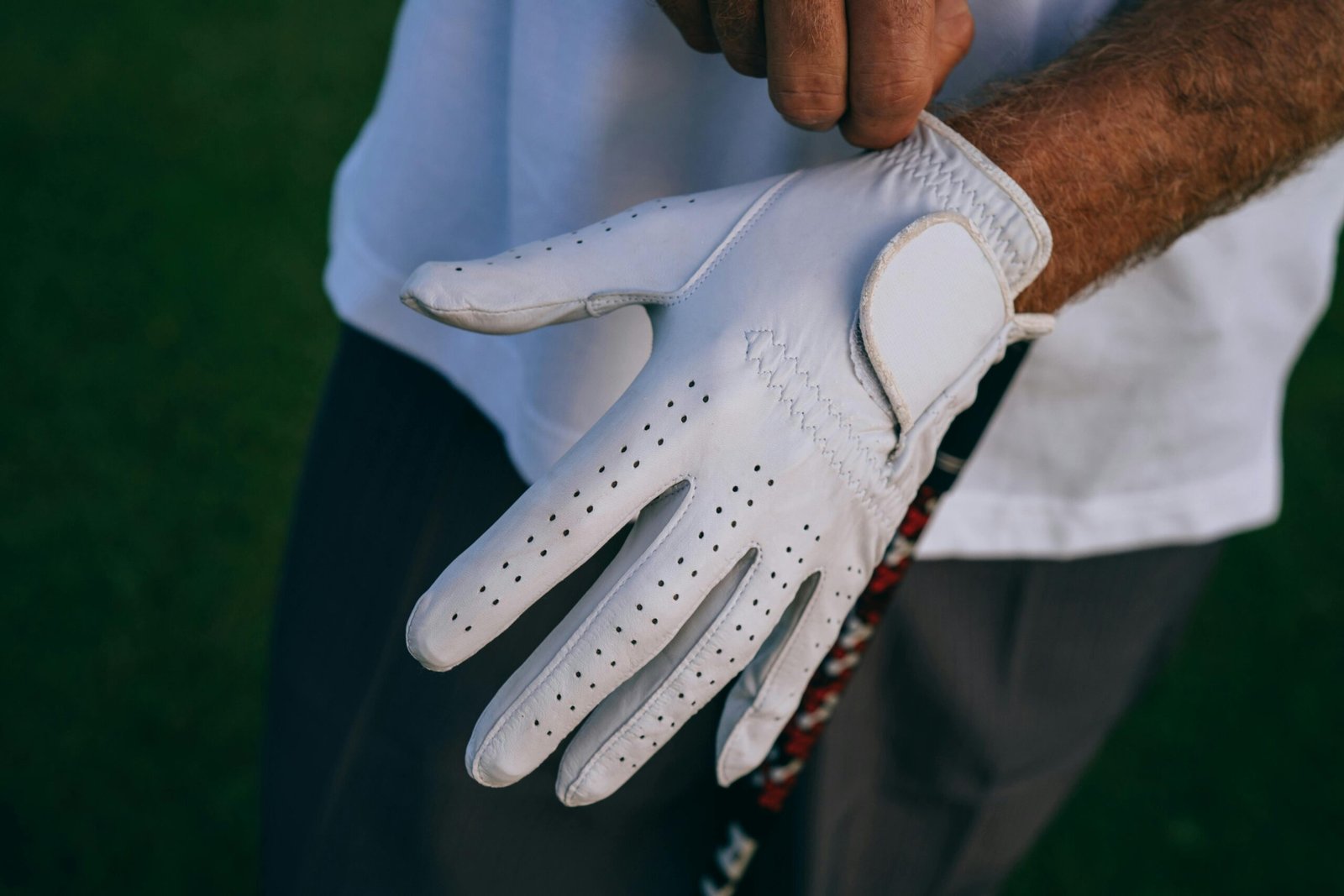Introduction to Golf Swing Mechanics
A comprehensive understanding of golf swing mechanics is essential for any golfer looking to enhance their performance on the course. The golf swing is a complex movement that engages multiple muscle groups, specifically the core, glutes, shoulders, hips, and back. These muscle groups work in unison to create a powerful and effective swing, contributing significantly to the distance and accuracy of each shot. Thus, recognizing how these muscles function during the swing is fundamental not only to the golfer’s technique but also to their overall physical fitness.
Improving golf swing mechanics involves optimizing strength, flexibility, and balance through targeted workouts. Each element plays a crucial role in achieving an efficient swing. Strength is necessary for generating power, particularly in the lower body and core, while flexibility enables a greater range of motion, allowing for a smoother swing. Meanwhile, balance is vital for maintaining stability throughout the swing, ensuring that golfers can follow through effectively without losing their footing.
By incorporating specific workouts aimed at enhancing these muscle groups, golfers can significantly improve their swing mechanics. For instance, core workouts bolster the stability needed for a consistent swing pathway. Exercises focused on the glutes and hips promote rotational power, which can add distance to shots. Meanwhile, shoulder and back workouts increase the range of motion and strength, facilitating a more effective and controlled swing.
As we delve deeper into the various workouts to improve golf swing mechanics, it becomes clear that developing physical fitness is inextricably linked to enhancing performance on the golf course. A holistic approach to strength, flexibility, and balance training lays a strong foundation for golfers seeking to refine their swing and ultimately achieve better results on the green.
The Role of the Core in Your Golf Swing
The core muscles play a pivotal role in generating power and stability during your golf swing. Engaging the core throughout the swing helps maintain balance and control, allowing golfers to execute their shots more effectively. Strong core muscles translate to improved torque and a more fluid motion, which are essential for a powerful and accurate swing. To enhance your golf performance, incorporating specific workouts to improve your golf swing through core strengthening is crucial.
One of the most effective exercises for core strength is the plank. To perform a standard plank, start by lying face down on the ground. Then, lift your body off the ground while supporting it on your forearms and toes. Ensure your body forms a straight line from head to heels. Hold this position for 30 seconds to a minute, aiming for three sets. As you progress, you can increase the duration or try variations such as side planks to further challenge your core muscles.
Another excellent exercise is the Russian twist, which targets the obliques and enhances rotational strength essential for the golf swing. To perform a Russian twist, sit on the floor with your knees bent and feet flat. Lean back slightly while keeping your back straight, and lift your feet off the ground. Clasp your hands together and rotate your torso to the right, then to the left, tapping the floor beside you if possible. Perform three sets of 10-15 repetitions on each side. This exercise not only improves your core strength but also enhances your rotational mobility, crucial for executing powerful golf swings.
By regularly incorporating these core workouts into your training routine, you’ll build the strength necessary to stabilize your body during your swing. This added stability and power will ultimately lead to improved overall performance on the golf course.
Building Strength in the Glutes and Legs
The glutes and leg muscles are fundamental contributors to a golfer’s swing, providing the necessary stability and power to execute effective movements. Enhancing strength in these areas can significantly improve your overall swing mechanics. A well-developed lower body allows for better weight transfer and balance during your shots, directly impacting your performance on the course. This section outlines effective workouts to improve golf swing by focusing on the glutes and legs.
One of the most efficient exercises to strengthen the glutes and legs is the squat. To perform a basic squat, stand with your feet shoulder-width apart and your toes slightly turned out. As you lower your body, keep your chest up and push your hips back as if sitting on a chair. Go down until your thighs are parallel to the ground, then press through your heels to return to the starting position. Aim for 3 sets of 10-15 repetitions to build muscle endurance and strength.
Another key exercise is the lunge, which promotes balance and single-leg strength, essential for a consistent golf swing. To execute a lunge, step forward with one leg, lowering your hips until both knees form approximately 90-degree angles. Make sure the front knee does not extend past your toes. Push through your front heel to return to the starting position. Perform 3 sets of 10-12 repetitions on each leg to enhance stability and strength.
Incorporating these workouts into your training routine will improve your strength and stability, which are vital for generating a powerful and controlled swing. Consistency is crucial; aim to integrate these strength-building exercises at least two to three times a week. With time, you will notice a marked improvement in your golf swing, showcasing the essential role that glutes and legs play in the overall execution of your game.
Shoulder Strength for a Powerful Swing
The role of strong shoulders in a golf swing cannot be overemphasized. The shoulder muscles play a pivotal part in generating power and stability, which are essential for an effective and efficient swing. A well-developed shoulder musculature aids in improving swing mechanics and can significantly enhance swing speed. Consequently, incorporating targeted workouts to improve your golf swing, particularly those focused on shoulder strength, is crucial for both amateur and experienced golfers alike.
One of the most effective exercises for shoulder strength is the shoulder press. This exercise targets the deltoids and helps build the necessary strength to maintain control during the golf swing. To perform the shoulder press effectively, stand or sit with your feet shoulder-width apart. Holding a dumbbell in each hand at shoulder height, press the weights overhead until your arms are fully extended. Gradually lower the weights back to the starting position. Aim for three sets of 8–12 repetitions to maximize muscle engagement and strength development.
Another beneficial exercise is the band pull-apart, which focuses on the rear deltoids and upper back muscles. To do this exercise, grab a resistance band with both hands, keeping your arms straight in front of your chest. Pull the band apart until your arms are extended to the sides, squeezing your shoulder blades together at the peak of the movement. Slowly return to the starting position. Perform three sets of 12–15 repetitions to enhance muscular endurance and promote better postural alignment during your swing.
Integrating these shoulder exercises into your workout regimen can lead to marked improvements in swing speed and overall golf performance. Stronger shoulders provide the foundation for a powerful swing, ultimately enhancing your golf game. While focusing on upper body strength, remember to balance your workouts with exercises targeting flexibility and core stability for a complete golf fitness routine.
Hip Flexibility and Its Impact on Swing Mechanics
Hip flexibility plays a crucial role in improving your golf swing mechanics. A flexible hip joint allows for greater range of motion, which is essential for a full and unrestricted swing. The ability to rotate smoothly through the hips greatly influences the power and accuracy of your shot. Therefore, integrating specific exercises focused on hip flexibility into your routine can lead to significant improvements in your performance on the golf course.
One effective way to enhance hip flexibility is through dynamic stretching. This form of stretching involves movement, which can prepare your muscles for the demands of golf. For instance, the “Leg Swings” exercise is particularly beneficial. To perform leg swings, stand next to a stable structure, such as a wall. Swing one leg forward and backward gently for 10-15 repetitions. Repeat with the opposite leg. This exercise helps loosen the hip flexors and prepares them for the rotation required in a golf swing.
Another beneficial exercise is the “Lizard Pose,” derived from yoga. To execute this pose, start in a plank position, step your right foot to the outside of your right hand, and lower your hips while keeping your back leg straight. Hold this position for 20-30 seconds, then switch sides. The Lizard Pose not only improves hip flexibility but also helps in maintaining balance during your swing.
Including these workouts to improve golf swing can enhance your overall effectiveness. For optimal results, incorporate these exercises into your weekly workout routine, aiming for three sets of 10-15 repetitions for each exercise. By focusing on hip flexibility, you will likely experience smoother transitions and generate more power, leading to improved performance on the course.
Strengthening the Back for Enhanced Control
Developing a strong and resilient back is crucial for golfers looking to enhance their swing control and prevent injuries. The back muscles, particularly the latissimus dorsi, rhomboids, and erector spinae, play a significant role in maintaining proper posture during a golf swing. By incorporating targeted workouts to improve golf swing mechanics, golfers can achieve greater consistency and stability, thus enhancing their overall performance on the course.
One effective exercise for strengthening the back is the bent-over row. This exercise not only targets the back muscles but also engages the core, promoting overall body stability. To perform a bent-over row, begin by standing with your feet shoulder-width apart, holding a dumbbell in each hand. Hinge at the hips while keeping your back straight, lowering your torso until it is nearly parallel to the floor. With your arms extended, pull the dumbbells towards your waist, focusing on squeezing your shoulder blades together. Aim for 3 sets of 10 to 15 repetitions, ensuring proper form throughout the movement to avoid injury.
Another beneficial exercise is the back extension, which can be performed using a stability ball or a back extension bench. Start by positioning your hips against the edge of the bench, with your feet securely anchored. With your body in a straight line from head to toe, slowly lower your upper body towards the ground, then engage your back muscles to raise your torso back to the starting position. Performing 3 sets of 12 to 15 repetitions will help build endurance and strength in the back muscles, contributing to improved swing dynamics.
By incorporating these targeted workouts into your training routine, you can enhance your swing control significantly. A strong back fosters better posture, allowing for a smoother, more powerful, and consistent golf swing, which ultimately leads to improved performance on the course.
Balancing Techniques for Better Swing Stability
Achieving a powerful and accurate golf swing hinges significantly on the golfer’s balance and stability. The golf swing requires not only strength and flexibility but also a strong foundation of balance to enable the golfer to execute their movements with precision. Imbalances can lead to inconsistent swings and adversely affect overall performance on the course. Therefore, incorporating balancing techniques into workouts designed to improve golf swing is essential for players seeking to enhance their game.
One effective exercise to consider is the single-leg stand. This exercise focuses on core stability, which is crucial for maintaining balance during a golf swing. To perform a single-leg stand, begin by standing on one leg with the other leg slightly raised off the ground. Aim to hold this position for 30 seconds, ensuring you engage your core to maintain stability. As you become more confident, you can increase the duration or close your eyes to challenge your balance further. The single-leg stand fosters proprioception, the body’s ability to sense its position in space, contributing to a more controlled and stable golf swing.
Another excellent method for enhancing balance is through BOSU ball workouts. The BOSU ball, which is half of an exercise ball mounted on a flat platform, adds an element of instability, forcing the body to engage various stabilizing muscles. Simple exercises, such as squats or lunges performed on the BOSU ball, can significantly improve balance and coordination. By standing on the flat side, golfers can perform these exercises to strengthen their lower body while simultaneously focusing on maintaining balance, which directly correlates to better control during the golf swing.
Incorporating such workouts to improve the golf swing not only strengthens the body but also enhances the golfer’s ability to remain balanced throughout their swing. Improved balance translates to a more stable swing, resulting in greater precision and control on the greens.
Sample Weekly Workout Routine
Designing a weekly workout routine that focuses on enhancing your golf swing requires a balanced approach that incorporates strength training, flexibility exercises, and balance work. Below is a sample routine that can easily be adapted to suit various fitness levels, ensuring that anyone can benefit from workouts to improve golf swing efficiency.
Day 1: Strength Training
Begin with exercises such as squats and lunges, focusing on your lower body strength, which is vital for a powerful swing. Incorporate exercises like push-ups and bent-over rows to develop upper body strength. Aim for 3 sets of 8-12 repetitions for each exercise, with a focus on controlled movements and proper form to avoid injury.
Day 2: Flexibility and Mobility
Engage in a series of dynamic stretching routines, including leg swings and torso twists. Follow this with yoga or Pilates sessions that emphasize spinal rotation and hip flexibility. These workouts will aid in developing the necessary elasticity for an efficient golf swing. Spend around 30 to 60 minutes focusing on flexibility to enhance your range of motion.
Day 3: Balance Training
Incorporate balance-focused exercises like single-leg stands or stability ball exercises. Balance is a crucial component of a successful swing, so dedicate time to activities that challenge your stability. Include rotational movements, such as medicine ball twists, to simulate the swing motion, which can further bolster your overall performance on the golf course.
Day 4: Active Recovery
Engaging in low-impact activities such as walking or swimming can be beneficial. This day is essential for muscle recovery while keeping the body active. Consider light stretching and foam rolling to relieve tension in the muscles, preparing you for the days ahead.
Days 5 & 6: Repeat Strength and Flexibility Workouts
Repeat the strength training and flexibility routines introduced earlier in the week, modifying exercises as needed to accommodate progress and prevent plateauing.
Day 7: Rest
Rest is vital for regeneration. Make sure to allow your muscles time to recover fully, as a well-rested body will yield better performance during upcoming workouts to improve your golf swing.
This sample weekly routine is a guideline designed to help you stay consistent while pursuing optimal fitness for golfing. Adjust the workouts based on your starting fitness level, and aim to challenge yourself progressively.
Conclusion and Final Thoughts
In the realm of golf, enhancing one’s swing is vital for improving overall performance. Incorporating workouts to improve golf swing serves as a foundation for building strength, flexibility, and balance—three crucial components that significantly influence swing mechanics. As demonstrated throughout this discussion, a structured fitness regimen not only leads to better swing efficiency but also helps in preventing injuries that could arise from overexertion or improper technique.
By embracing these workouts, golfers can identify and target specific areas of concern to elevate their game. For instance, exercises focusing on core stability improve posture during the swing, while those that enhance leg strength allow for a more powerful follow-through. Furthermore, incorporating flexibility training ensures a greater range of motion, enabling a more fluid and effective swing sequence. Overall, the benefits of committing to a dedicated workout program are multifaceted, contributing to both the physical and mental aspects of golf.
It is essential to recognize that improvement in one’s golf swing is a continuous journey. As golfers progress, they should consider experimenting with various workouts tailored to their evolving needs. This might include integrating different stretching routines, strength training exercises, or balance drills that keep the fitness routine fresh and engaging. Staying informed about new research and trends in fitness can also inspire golfers to adapt their workouts, further enhancing their swings and overall capabilities on the course.
Ultimately, the commitment to incorporating workouts to improve golf swing not only aims at achieving immediate results but also fosters long-term athletic growth. Embrace the journey, remain adaptable, and witness the improvements that both physical fitness and technical skill can bring to your golfing experience.



